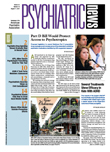Better funding and integration of emergency and trauma services, improved and sustained training of physicians and other emergency health care workers, and enhanced legal protection of first responders to a disaster are the broad goals issued by an 18-member coalition of health care and medical organizations in a 54-page report titled “Improving Health System Preparedness for Terrorism and Mass-Casualty Events.”
The coalition was led by the AMA and the American Public Health Association (APHA). The report, issued last month, includes 53 strategic recommendations for legislators, government officials, and organizational leaders to prepare for and respond to catastrophic emergencies more effectively.
The goal of the recommendations is to strengthen health system preparedness and response through increased funding, greater integration, continued education and training, and legal protections for responders.
“Most disasters are unplanned, but the response shouldn't be,” said AMA President Ronald Davis, M.D., in a statement following release of the report. “Whether disasters are natural or man-made, infectious-disease pandemics or terrorist attacks, physicians, health care professionals, and public health workers must be prepared to respond to emergencies and aid in the recovery efforts that follow. We can't predict when a disaster will strike, but as first responders, we can better prepare ourselves and others to protect the health and safety of our patients and citizens.”
The AMA and APHA convened the AMA/APHA Linkages Leadership Summit, which met in 2005 in Chicago and 2006 in New Orleans, to develop recommendations that promote a coordinated national agenda for strengthening health-system preparedness for terrorism and other disasters. The call to action stresses the following critical recommendations:
•
Public health systems must be appropriately funded to respond adequately to day-to-day emergencies and catastrophic mass-casualty events.
•
Public health and disaster response systems must be fully integrated and interoperable at all government levels.
•
Health care and public health professionals should maintain an appropriate level of education and training.
•
Health care and public health responders must be provided with and assured of adequate legal protections when they respond to a disaster.
“For too long, public health and medicine have responded to emergencies in separate silos,” said Georges Benjamin, M.D., executive director of the APHA, in a statement. The report “represents our attempt to bridge the gap so that our health care and public health systems are fully integrated and interoperable in ways that allow for a rapid and efficient disaster response.”
The AMA/APHA Linkages Leadership Summit project was funded under a cooperative agreement from the Centers for Disease Control and Prevention's Terrorism Injuries: Information Dissemination and Exchange program.
The following organizations are members of the AMA/APHA Linkages Leadership Summit: American Academy of Pediatrics, American College of Emergency Physicians, American College of Surgeons, American Dental Association, American Hospital Association, American Nurses Association, American Osteopathic Association, American Trauma Society, Association of State and Territorial Health Officials, Emergency Nurses Association, National Association of County and City Health Officials, National Association of EMS Physicians, National Association of Emergency Medical Technicians, National Association of State EMS Officials, National Native American EMS Association, and State and Territorial Injury Prevention Directors Association.
The report and recommendations are posted at<www.ama-assn.org/go/disasterpreparedness>.▪
